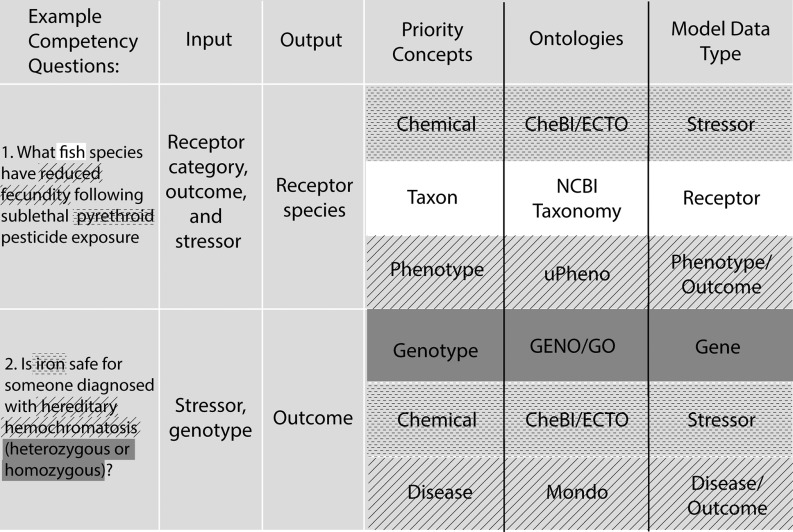Figure 1.
Example competency questions. Competency questions were developed by workshop participants (see the section “Competency Questions” in the Supplemental Material) to help guide the data model and expose deficiencies in ontological coverage. The input indicates the type of information provided by the hypothetical user in the example question. The output indicates the type of information the hypothetical user is requesting. The semantic types of the inputs and outputs are listed as priority concepts that can be represented by the listed ontologies, such as chemical (dashed line), taxon (white), phenotype or disease (hashed lines), and genotype (gray). These semantic types and are represented in the semantic model (Figure 2) as the model data type. Note: CheBI, Chemicals of Biological Interest; ECTO, Environmental Conditions, Treatments, and Exposures Ontology; GENO, Genotype Ontology; GO, Gene Ontology; Mondo, Mondo Disease Ontology; NCBI, National Center for Biotechnology Information; uPheno, Unified Phenotype Ontology.

